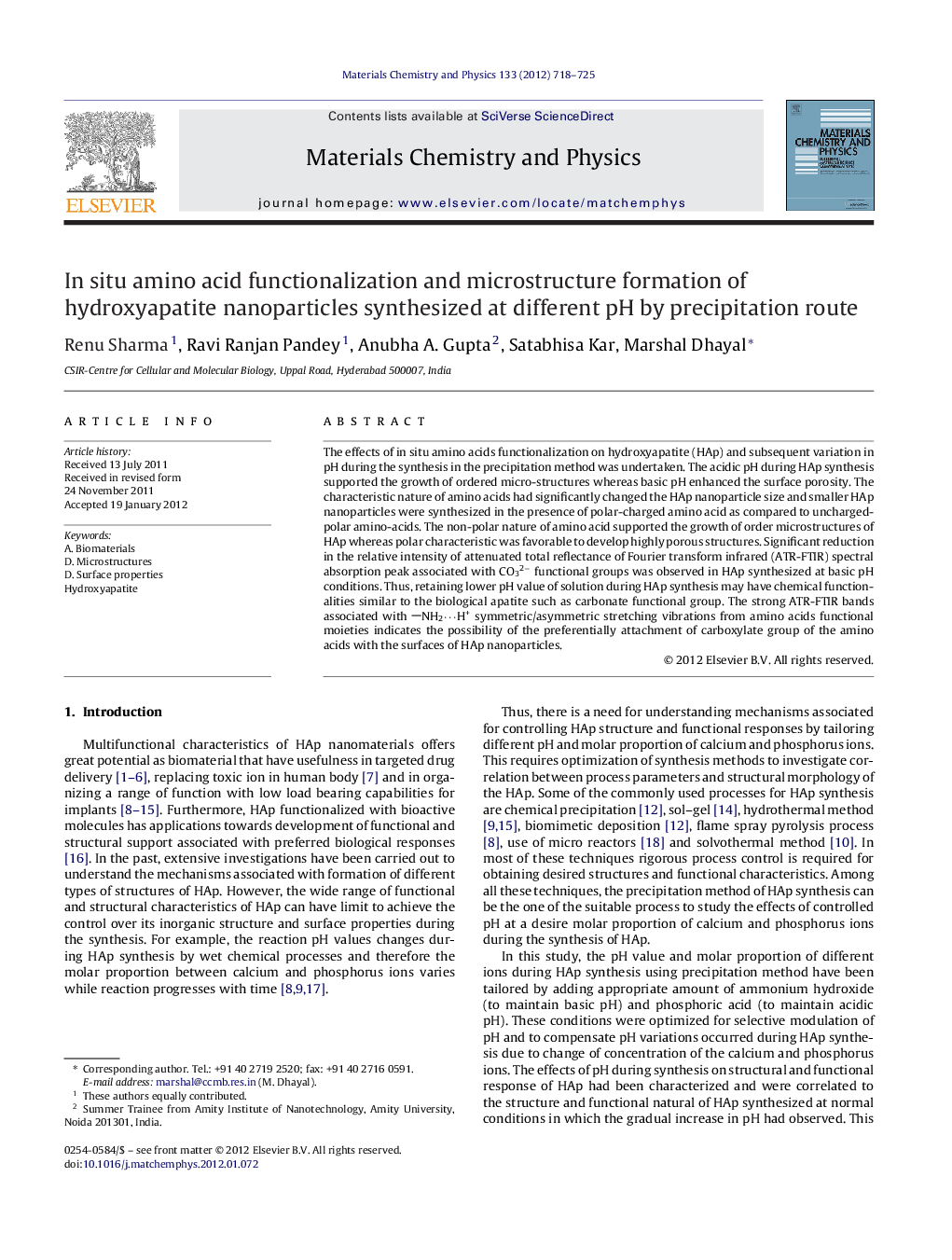| Article ID | Journal | Published Year | Pages | File Type |
|---|---|---|---|---|
| 1523243 | Materials Chemistry and Physics | 2012 | 8 Pages |
The effects of in situ amino acids functionalization on hydroxyapatite (HAp) and subsequent variation in pH during the synthesis in the precipitation method was undertaken. The acidic pH during HAp synthesis supported the growth of ordered micro-structures whereas basic pH enhanced the surface porosity. The characteristic nature of amino acids had significantly changed the HAp nanoparticle size and smaller HAp nanoparticles were synthesized in the presence of polar-charged amino acid as compared to uncharged-polar amino-acids. The non-polar nature of amino acid supported the growth of order microstructures of HAp whereas polar characteristic was favorable to develop highly porous structures. Significant reduction in the relative intensity of attenuated total reflectance of Fourier transform infrared (ATR-FTIR) spectral absorption peak associated with CO32− functional groups was observed in HAp synthesized at basic pH conditions. Thus, retaining lower pH value of solution during HAp synthesis may have chemical functionalities similar to the biological apatite such as carbonate functional group. The strong ATR-FTIR bands associated with NH2⋯H+ symmetric/asymmetric stretching vibrations from amino acids functional moieties indicates the possibility of the preferentially attachment of carboxylate group of the amino acids with the surfaces of HAp nanoparticles.
► Basic crystalite structures of HAp does not depende on pH variation. ► Active functional groups of amino-acids can be attached at verious pH value. ► Low pH values during synthesis supports existence of CO32− functional group. ► Higher pH values are desirable for achieving better surface porosity.
